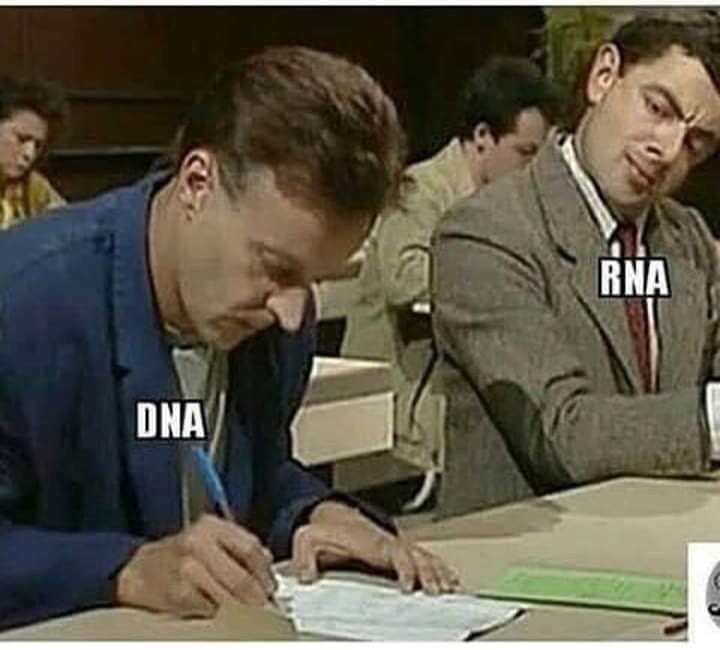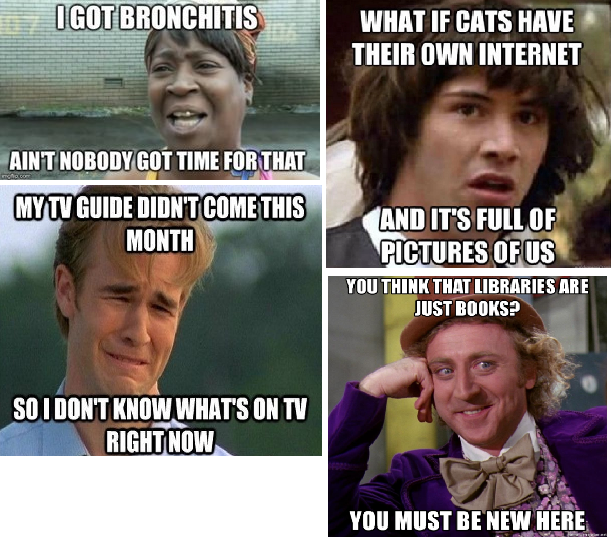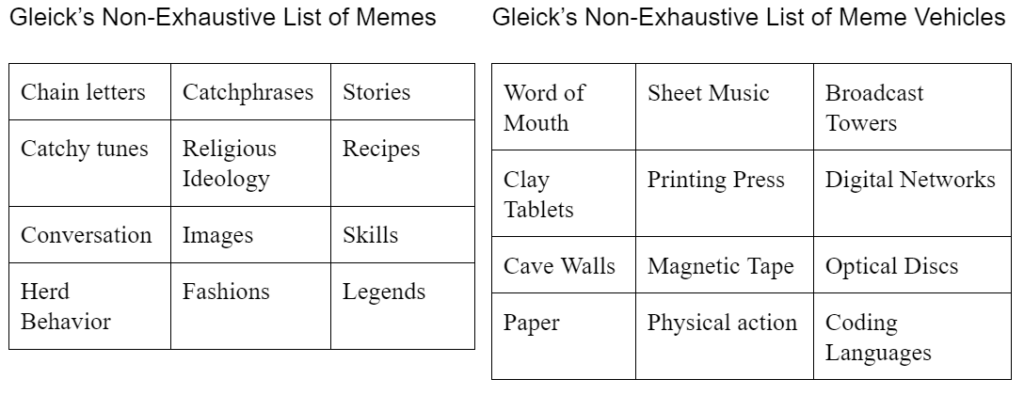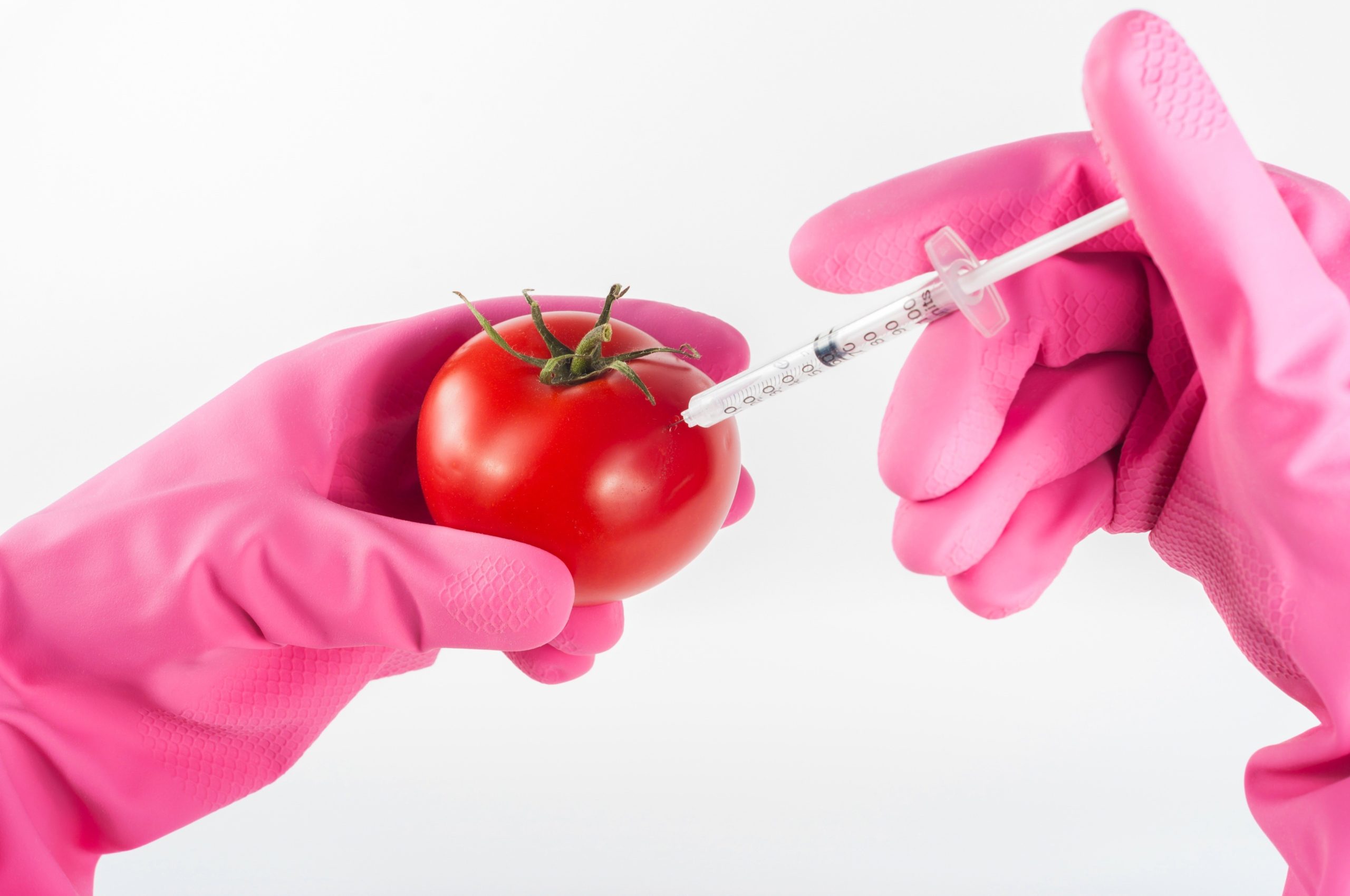by Drew Hanson
All pervasive and ever-present, memes are a cornerstone of current popular culture. But how do these ideas take root and spread? Beginning with understanding the similarity between evolutionary genetics and memetic spread and the significance memes have played throughout history can help us appreciate the potential for meme virality.

Although most familiar in its graphic with overlaid text format, memes are much more than that. But let’s start from the beginning. The evolutionary biologist Richard Dawkins first coined the term “meme” in his 1976 book The Selfish Gene. Drawing a stark comparison to the DNA/RNA relationship, Dawkins applied the theory of genetic evolution to the evolution (and mutation and spread) of ideas, or memes. In this scenario, people provide the building blocks for ideas (nucleotides/DNA), then language or other forms of communication (RNA) copy and carry those ideas to countless others. Then, much like evolutionary genetics, an infinite number of factors determine the success and spread of memes. This is all a gross oversimplification of the fundamentals of genetics and memetics on my part, but I appreciate that you’ve stuck with the metaphor this far.
Now that we have the basics of meme/life evolution out of the way, what I’ll focus on for the remainder of this post are the many replicators and vehicles memes use to spread. As noted earlier, memes are conveyed through a multitude of vessels and mediums; and have been an important function for cultural spread for thousands of years (you read that right). Memes are much more than Bad Luck Brian, Condescending Wonka, or Dawson Crying. Memes are a catchy tune, a thumbs-up, mob mentality or fables passed down between generations.

In his deeply engrossing article for Smithsonian Magazine, James Gleick gives myriad categorical examples for both what constitutes a meme and the various methods memes have spread throughout human culture over the centuries. These many forms of communication and dissemination helps to illustrate how memes have traveled throughout the centuries, but also how modern advancements help ideas reach potential virality by removing barriers such as time and distances.

By way of quoting American neurophysiologist Roger Sperry, Gleick hones the notion of idea/meme spread through human culture and the resulting impact:
“Ideas cause ideas and help evolve new ideas. They interact with each other and with other mental forces in the same brain, in neighboring brains, and thanks to global communication, in far distant, foreign brains. And they also interact with the external surroundings to produce in toto a burstwise advance in evolution that is far beyond anything to hit the evolutionary scene yet.”
As for strategic communicators, graduate students, authors, marketers, politicians, sales people and others who depend on their ideas to take root and spread beyond the mind, we shouldn’t lose sight of the many options available to replicate and transmit our memes to culture far and wide. Much like we study psychographics and demographics (via sources like newspaper archives) to understand our target audiences, we should take note of evolutionary genetics to better grasp the type of culture (both in the sense of a petri dish and society) that is ripe for our ideas to go from single autonomous organism to a fully replicating and spreading entity.
So what do you think? Does using evolutionary genetics as a metaphor for how memes spread complicate a simple idea (good memes spread/ bad memes don’t), or does it help us better understand why some ideas can permeate culture?



I’m so glad someone wrote a blog post about memes.
To answer your question, I think most people have a better understanding of memes than evolutionary biology. Bio-anthropology was one of my favorite subjects in undergraduate, and it’s my favorite to teach, but the number of misconceptions I’ve run into about genetics and evolutionary processes (i.e. individuals evolve like Pokemon) leads me to think Dawkins’ metaphor complicates the conversation more than it clears things up.
I always think of memes like diseases – we even use the word “viral” to describe when a trend spreads to a lot of people. I remember my freshman year of college was when the Harlem Shake went viral. Even Puddles did one: https://www.youtube.com/watch?v=fkNYFbAZA34
Most of the Harlem Shake videos were mediocre at best, but they helped the trend grow and resulted in a few high-quality and/or creative videos, some of which have millions of views. Things that go viral aren’t always good, but something about them makes them infectious.
I think this metaphor makes a lot of sense, Drew. Thinking more broadly, it reminds me of the many other things that are mimicked, replicated, and transformed, just like memes or genetics. I took a linguistic anthropology class once about how language is shaped and transformed into pidgin languages (like Creole). A pidgin language is made up of several languages to create an entirely new language for increased and common understanding. They were often found in regions with lots of trade among people who spoke different languages. Perhaps what is now the typical internet meme serves a similar purpose of increasing shared understanding.
Thank you for sharing this, Drew! I had no idea about the deep history and genetic connection memes have!
Like you mentioned, I think the spread of whether a meme is good or is bad is a little more complicated than whether we like the meme or not. People are constantly looking for connection of a feeling that they’re understood or seen (much like Lauren Teague shared with us in class last week). I feel like the spread of a good meme and it’s success in permeating culture is dependent on whether people connect to the content and see themselves reflected in the meme. Being able to connect to that concept makes people more apt to act as an RNA and copy it to their audiences. It also makes me wonder about the concept that nothing is really new and everything has already been done. If that’s the case, are we really just copying old concepts from the dawn of our society? Maybe!
Whelp, I was today years old when I learned the Oregon Duck’s name is Puddles. I thought you meant this Puddles: https://www.youtube.com/watch?v=Y5DPNs-AMho and I am very disappointed he does not have a Harlem shake video.
ANYWAY…
I think this is an excellent metaphor and demonstrates to me how nothing really changes except the platform. I think the answer to both of your questions is “yes.”
If we really want to get deep, the reality is that everything is simple and everything is complex. I have an elevator speech summarizing a two-year Master’s program. It’s accurate, yet completely simplifies the intense coursework and time commitment.
Alternately, I commented on a meme today about the new Ghostbusters movie that showed up in my feed. Briefly, it said “there hasn’t been a ghost sighting in 30 years” over an image of the cast of the woman-led Ghostbusters film “disappearing.” Haha just a joke, right? Not to me! It was on my (cis white straight male) cousin’s feed with some other dudes reflecting on why the lady-version sucked. They weren’t rude about it, just critiquing. But I had to chime in, letting them know that a bunch of dudes panning a women-led film looks bad, and rather than pan it they could reflect on why its so hard for them to relate to women when white women all people of color have had to relate to the experiences of straight white men for entertainment for all of eternity. AND the meme erasing a women-centered film is problematic with the rampant misogyny in geek culture.
It was s simple meme with a simple joke that has a lot of social implications that needed to be unpacked. Memes do combine “languages” to pull in Kristin’s example – and there are lots of different meme “languages” as well. I kind of think of memes as digital “political cartoons” featured in print papers. The image is a shared cultural artifact, but the interpretation of the image has a context and language all its own, specific to certain audiences, some being more broadly understandable than others.
Great post Drew!
As a former student of evolutionary genetics, I’m totally fascinated that Dawkins originated the word meme. Thanks for writing about this connection Drew! However, I’m a little skeptical that the more complex modern understanding of DNA and RNA is a fitting analogy for memes in human communication. We know exponentially more about genetics – and communication – than we did when Dawkins was writing. The copying and editing and reworking of memes definitely remind me of the more simple viral or bacterial genetics (they do call it “going viral” after all!). Plus bacterial ideas never die and can easily jump between individuals… I’d love to see a current analysis that looks at communication analogies for epigenetics, programmed cell death, or even the microbiome…
Gonna simplify my thoughts as much as possible: the metaphor works, BUT it would work much more effectively in reverse. Most youth have a pretty solid understanding of the complexities of memes I hope, so, this actually could be used in the classroom to better understand evolutionary genetics. I really like this comparison because it captures interactions with the external surroundings that are often ignored by deliberate ‘meme-makers.’